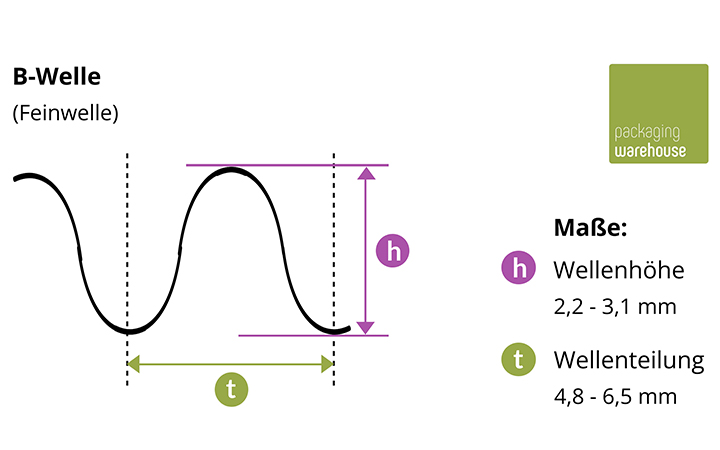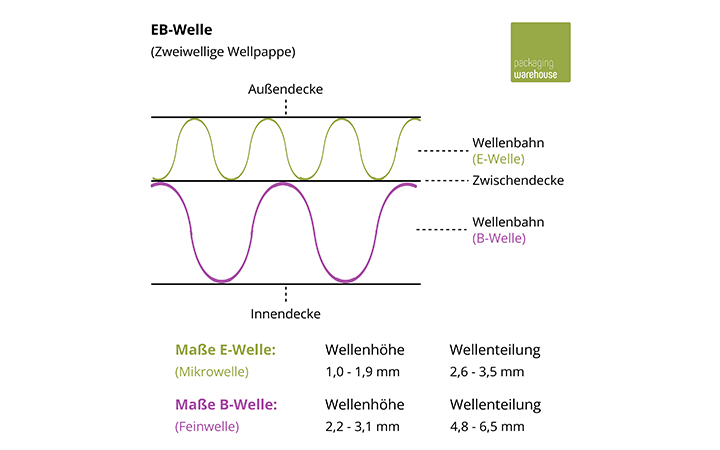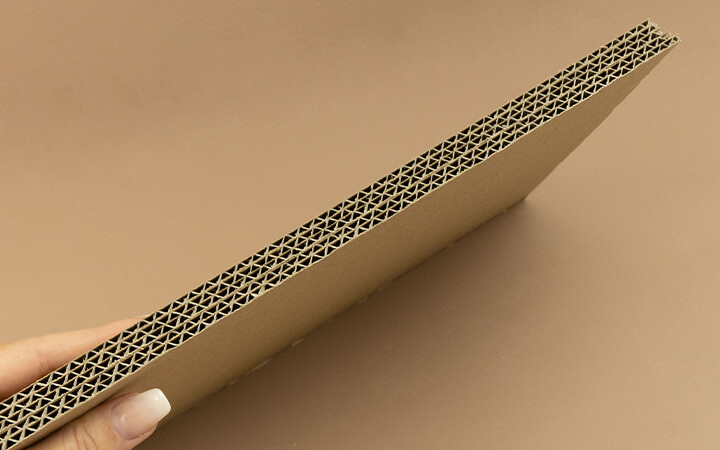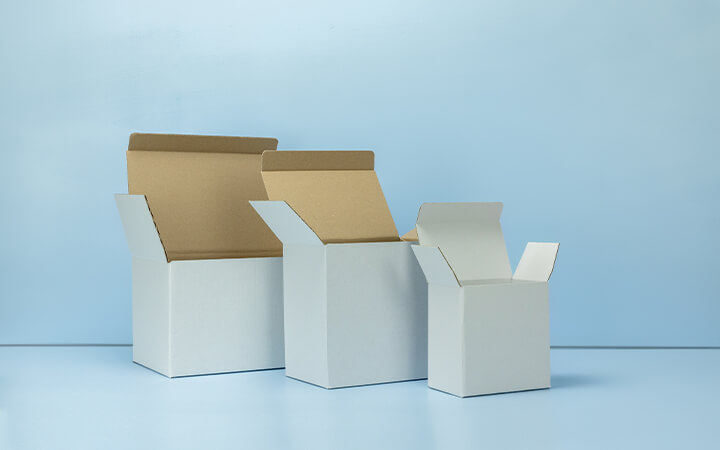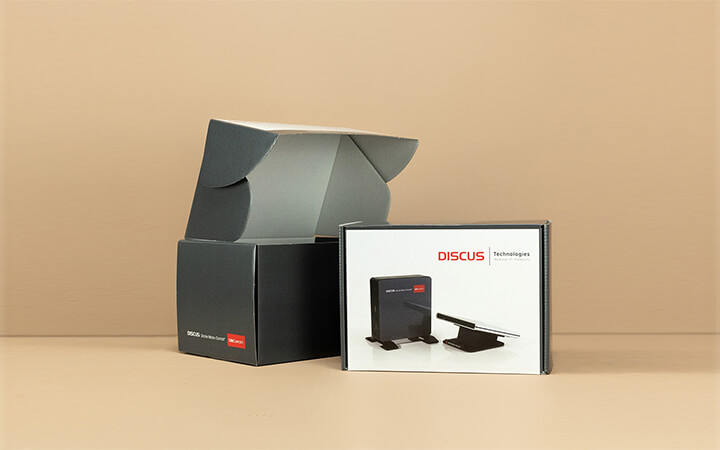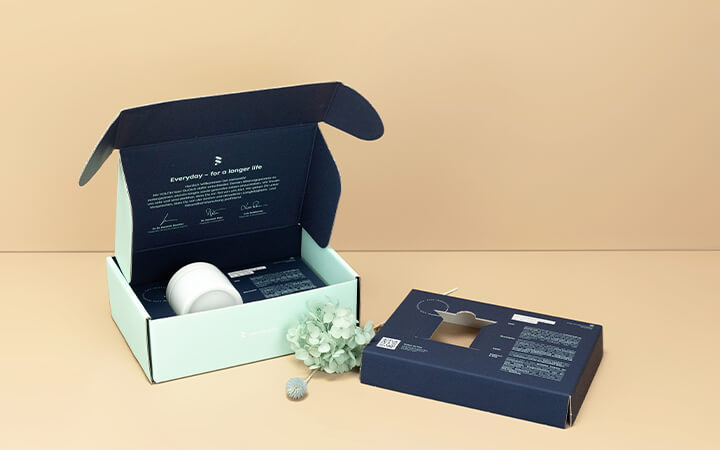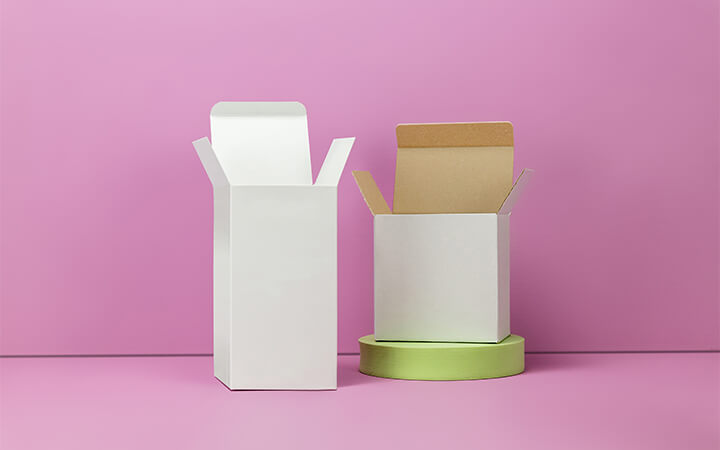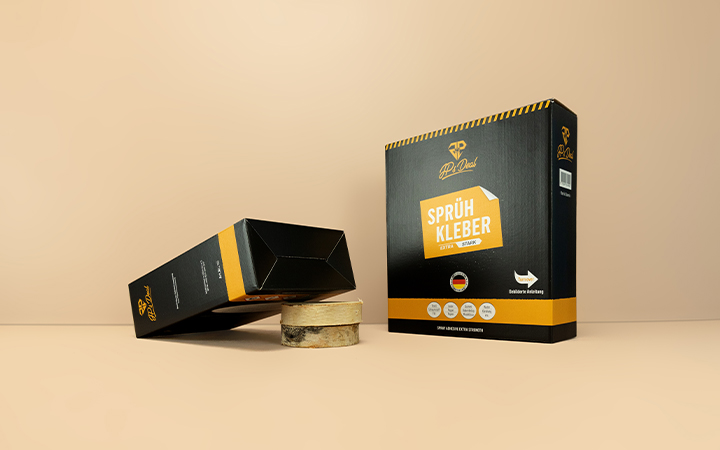Corrugated cardboard from packaging warehouse - All advantages at a glance
High stability
Our corrugated cartons guarantee high stability with low dead weight. The cavities between the corrugated sheets also create a buffer that protects the contents from shocks, pressure or falls.
Wide range of different types of shafts
We carry different corrugated cardboard variants that have special properties and can also be combined with each other. So you always get the right flute for every application.
Corrugated cardboard from domestic production
We produce all our products exclusively in Germany. This way, we not only support our domestic workforce, but also achieve short delivery distances. This has a positive effect on costs and the environment.
Very good ecological balance
Corrugated cardboard is characterized by resource-saving and energy-efficient production, which is very sustainable. The excellent stability with low dead weight is only one of many decisive factors.
THE DIFFERENT TYPES OF SHAFTS
Due to the fact that shipping boxes with different corrugations and flute heights have different advantages and disadvantages, different types of corrugated cardboard have developed over time. Although not all types of corrugated cardboard are used in the mail order business, we have provided a complete list of all the different types of corrugated cardboard here. Basically, the different types are divided into classes:
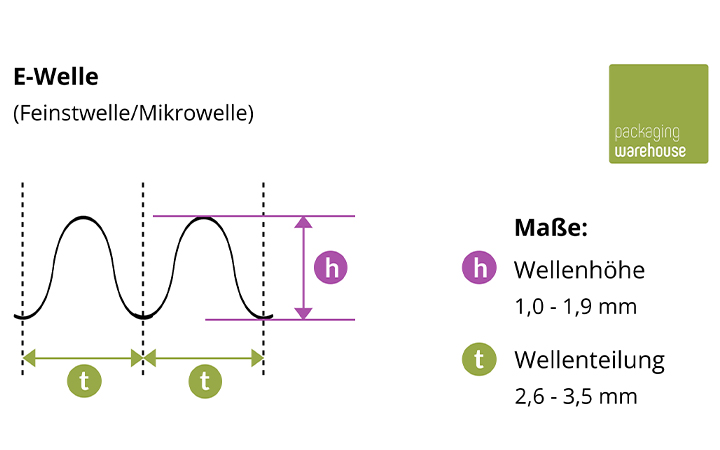
- Mini-shaft: This type is also called graphic corrugation because they are excellent for printing. They have a flute height of only 0.4 to 1.0 mm with a flute separation of 1.6 to 2.6 mm. Due to this characteristic, the carton is very smooth and can reproduce printed images without distortion. This category includes the N-flute, G-flute and F-flute types, the latter no longer referred to as graphic corrugation.
- Fine shaft: Also known as microwave, this type of corrugated cardboard has a flute height of 1.0 to 1.9 mm and a separation of 2.6 to 3.5 mm. The board of this class is still very suitable for printing, but already has good stability characteristics compared to the mini shaft. Classified this type as E flute, which we offer at packaging warehouse, for example, for the configuration of product packaging.
- Fine shaft: With a shaft height of 1.9 to 3.1 mm and a shaft separation of 3.5 to 6.5 mm, this type already has very high stability. Depending on the height and separation, the shaft type is referred to as a D-flute or a B-flute. Here, however, the point is exceeded at which a perfect print image can be guaranteed. The gaps between the flutes are too large for this and the outside is no longer one hundred percent smooth. We use the B flute to manufacture our shipping cartons.
- Medium shaft: C-flute corrugated cardboard boxes with a flute height of 3.1 to 4.0 mm and a flute separation of 6.5 to 7.9 mm have excellent protective properties in terms of stability and cushioning. This type of corrugated cardboard, just like the following types, is therefore primarily used as transport packaging.
- Coarse shaft: This category, under which the type of A-shaft falls, has a very high shaft height and spacing. The former ranges from 4.0 to 5.0 mm, the latter from 7.9 to 10.0 mm. It is suitable for transporting particularly heavy objects. The A-shaft, which is in this class, is the second largest shaft class.
- Maxi shaft: This type is also called Kaiser flute and includes all corrugated cardboard types whose flute height exceeds 5 mm and whose flute spacing exceeds 10.0 mm. The exact type designation is K-shaft.
Possible combinations
THE BEST OF BOTH SHAFTS
So, for the production of product or shipping packaging, there are various corrugated cardboard boxes available, all of which have their advantages and disadvantages. But what if you need a corrugated cardboard box that, on the one hand, has a very large load-bearing capacity, but on the other hand, can also display a printed image without any losses?
A combination of two flutes is suitable for this case. A good example, which is also used at packaging warehouse, is the combination of E- and B-flute. For this a B-flute is used for the inside and glued by an intermediate sheet to an E-flute, which serves as the outside. The product combined in this way is called EB flute. In this case, it is no longer referred to as single flute board but as double flute board.
The combination of these two shafts results in a new product, so to speak, which combines the excellent load-bearing capacity of the B-shaft with the smooth surface of the E-shaft. The cardboard produced in this way is therefore suitable for heavy packaged goods on the one hand, but can be printed with high quality on the other. This is why EB flute is one of our bestsellers when it comes to product packaging for heavy goods such as wine bottles or particularly fragile goods such as flacons. This is because product packaging must not only transport the packaged goods, but also the brand values, slogans, application instructions or even the color CI without any losses.
The history of corrugated cardboard
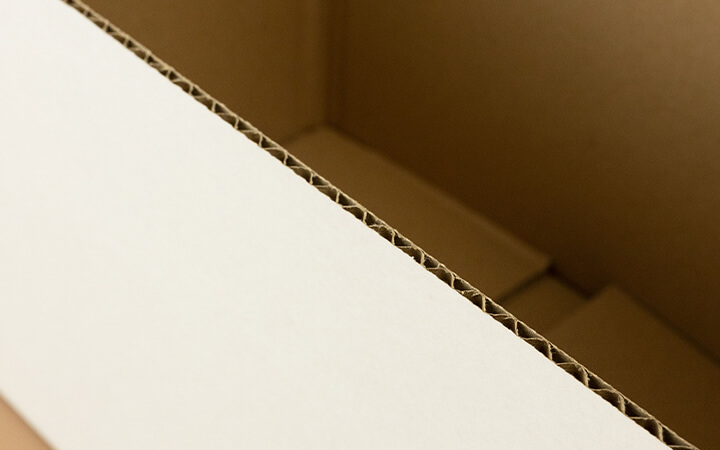
FROM LIFESTYLE ARTICLE TO BESTSELLER
The first patent for corrugated cardboard was approved many years ago. It dates back to 1856 and was filed by the Englishmen Edward Ellis Allen and Edward Charles Healey. However, the intended use was different at that time: corrugated cardboard was used as an insert to stabilize hats or suitcases, for example.
However, the inventors of corrugated cardboard did not yet have in mind the application for which it is primarily used and known today. Corrugated cardboard was further developed, but also not yet perfected, by an American named Albert L. Jones. He produced ruffles and neck ruffles. For this purpose, he used a machine with which it was possible to work corrugated sheets into fabric.
Instead of fabric, he processed cardboard with this machine and used the resulting corrugated cardboard packaging as outer packaging for everyday objects. But the brilliant idea came to his compatriot Oliver Long three years later: He glued the corrugated sheet between two smooth sheets of paper and corrugated cardboard was born with his patent of 1874 as the product that today is indispensable in the mail order business.
THE SECRET OF CORRUGATED BOARD STABILITY
The secret of the high load-bearing capacity of corrugated cardboard lies in the corrugations themselves. A straight paper sheet offers almost no stability. It tears quickly and is at most useful as a filling material inside a carton. For this, however, it must be crumpled up so that an air cushion can develop to protect the contents from bumps or falls.
However, if the paper is corrugated, it gains more stability even when unrolled, as small air cushions are already created. This simple corrugated cardboard is used, for example, to wrap bottles before they are packed in a shipping carton.
The air cushions help to absorb pressure or shock from the glass and prevent it from breaking. The cardboard becomes really resistant and stable only when the corrugation is glued on both sides with a smooth paper sheet. The resulting air cushions are now permanently woven into the material and can no longer be smoothed. This gives the material a high load-bearing capacity and stability, although it still weighs almost as much as three smooth sheets of cardboard.
SHAFT HEIGHT AND SHAFT SEPARATION
The most important factors that lead to an increased bearing capacity as well as a better print image are the height of the respective corrugations as well as their distance to each other. The higher a corrugation and the greater its distance from the next corrugation, the greater the air cushion and therefore also the stability.
However, this also results in a disadvantage: a corrugated board with a larger flute separation ensures that the straight outer webs are not one hundred percent smooth due to the large air cushions.
What does not play a major role for shipping and transport, however, comes into play when printing packaging. Because in order to be able to produce a high-quality print image without dents, we need a smooth surface on which the print image is applied.
Our bestseller
The most popular product from our corrugated cardboard range are our shipping packaging. Available in E-, B- or EB-flute, they can easily and safely transport packaged goods weighing up to 32 kilograms. The folding carton is certainly to be considered the classic in this segment. It is easy to handle and one of the most frequently used shipping cartons in the mail order business.
The hinged-lid box has the same properties, but has a hinged lid that opens like a chest. This has two advantages: Parcel tape is not necessarily needed to close it, and it offers customers a special unboxing experience thanks to the hinged lid, which can also be printed over its entire surface. The hinged-lid box as well as the shipping box is also available with adhesive strip. This type of product is perfect as shipping packaging for e-commerce.
Corrugated cardboard is also used as an inlay / cardboard insert to fix packaged goods within a package or, as in the field of pharmacological products, to identify daily doses. Since the inlay can also be printed over the entire surface, there are many possibilities for design and use.
Our corrugated cardboard folding boxes are especially popular as product packaging. Due to the great demand, we have various models with different closure options in our range, such as the folding box with tuck-in flap. The lid as well as the opening are closed by folding the side and main flaps into each other. Another model is the folding box with snap lock base. The opening works like the closure with tuck-in flap, but the bottom is tucked together and offers a higher load capacity.
The folding box with crash lock base is particularly convenient. This is firmly glued and automatically erects so that no packaged goods can fall out. Our corrugated cardboard is also excellent for reinforcement inlay. This is used to wrap bottles or flacons, for example, to provide greater protection during transport and storage. Another similar application is corrugated cardboard as a cardboard slipcase. This is slid over the packaging and protects the packaging or serves as an advertising space for slogans, brand logo or claim.



 (1).png)
.png)
.png)
.png)
.png)
 (1).png)
.png)

 (1).png)
.png)
.png)
.png)
.png)
.png)


.png)
.png)



.png)


.png)
.png)
.png)
.png)












.png)


.png)
.png)
.png)
.png)
.png)
.png)
.png)










.png)







.png)
.png)












.png)
















































.png)











.png)

.png)






























